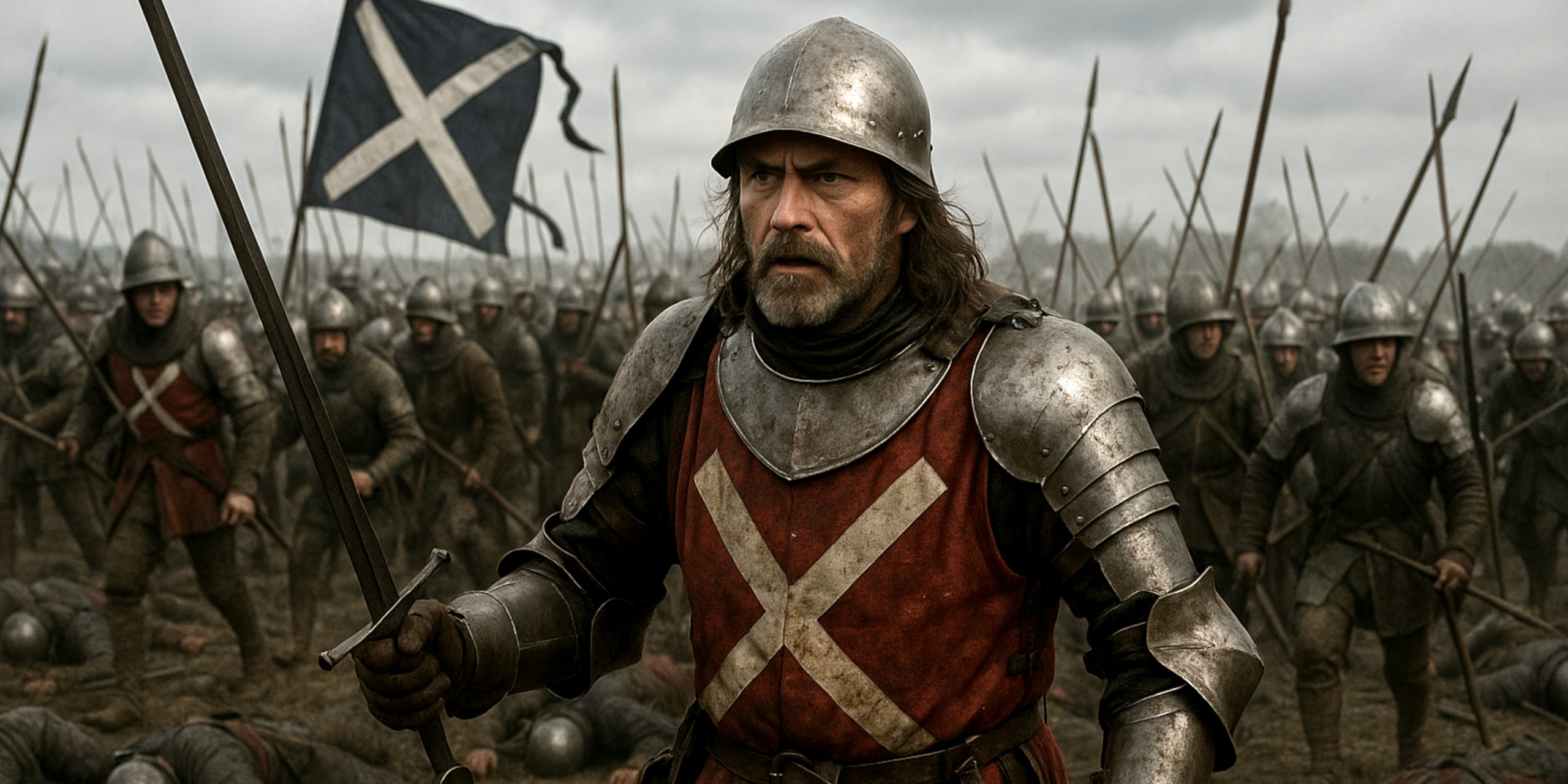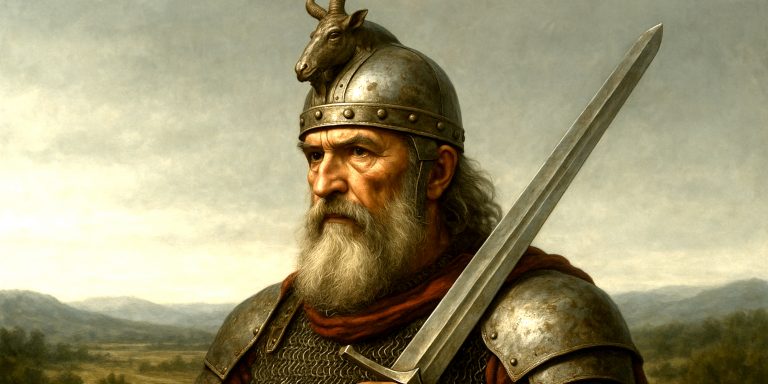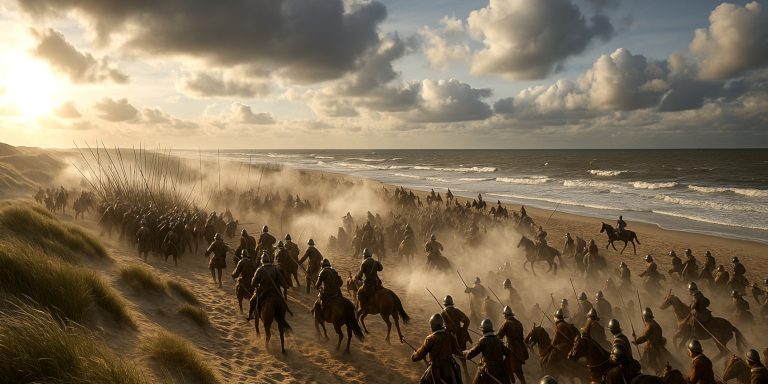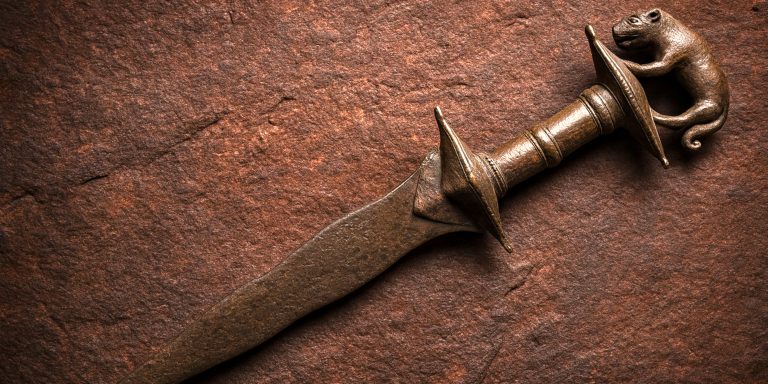
Richard Neville, 16th Earl of Warwick, known to history as the “Kingmaker,” was one of the most influential figures of 15th-century England. A dominant power during the Wars of the Roses, his political reach and military command reshaped the monarchy more than once. Yet his story is not one of straightforward ambition. It is a tale of family allegiance, personal rivalry, shifting loyalties, and the volatile nature of power in late medieval England.
Arms and Armour
As a nobleman of immense wealth and status, Warwick had access to the finest armour and weaponry available in England and on the continent. He likely outfitted both himself and his retainers with equipment sourced from Milan and Bruges, favoured centres of arms production at the time.
Armour:
- Milanese plate armour, with smooth surfaces and rounded forms, was typical of English nobles in the 1450s–1470s. Warwick would have worn a full harness of steel: cuirass, pauldrons, vambraces, greaves, and a sallet helm, often richly decorated.
- Sallet with bevor: His helm was likely a high-quality sallet, paired with a bevor to protect the throat and lower face, offering mobility and vision during battle.
- Surcoat or tabard: Displayed his coat of arms, often quartered with the insignia of the Montagu and Beauchamp families.
Weapons:
- Bastard sword (hand-and-a-half sword): Likely his primary weapon, allowing both single-handed and two-handed use in the thick of combat.
- Dagger of mercy (misericorde): For close quarters and delivering final blows to incapacitated foes.
- Mace or warhammer: Used in mounted combat to strike through or around plate armour.
His retainers were also well-equipped, reflecting his considerable resources. Armour for his household troops would have included brigandines, mail, and sallets, complemented with polearms like bills and glaives.
Battles and Military Acumen
Warwick’s reputation was not based solely on politics. He was a seasoned military leader with a shrewd understanding of power projection, logistics, and morale.
Key engagements:
- Battle of St Albans (1455): Warwick’s first major encounter. Though the Yorkist victory was small in scale, it signalled the start of civil war and brought him prominence.
- Battle of Northampton (1460): Demonstrated his ability to organise a decisive and well-coordinated assault. King Henry VI was captured, and Warwick’s influence surged.
- Battle of Wakefield (1460) and Second Battle of St Albans (1461): These defeats reflected the volatility of civil war. Nonetheless, Warwick quickly rebounded.
- Battle of Towton (1461): Though Edward IV took command, Warwick’s contribution in securing the throne was critical. His role in securing reinforcements and stabilising the rear was essential to the Yorkist triumph.
- Battle of Edgecote Moor (1469) and Battle of Barnet (1471): These later campaigns were driven by Warwick’s rebellion against Edward IV. At Barnet, his final battle, poor visibility and misidentification among his troops led to a devastating defeat and his death on the field.
Warwick’s strength lay in rapid mobilisation and his ability to command loyalty from the gentry and retainers of the Midlands and north. He was not always the most innovative tactician, but he excelled at force projection and managing multiple theatres of power.
Where to See Artefacts and Latest Archaeology
While few personal items belonging to Warwick survive, there are several places and finds that shed light on his world.
Warwick Castle: Though altered in later centuries, the castle remains a vital monument. As his family seat, it housed some of his armour and archives. Modern exhibitions detail his role in the Wars of the Roses and occasionally display late medieval arms and armour reflective of his era.
British Museum and Royal Armouries (Leeds): Both institutions hold 15th-century arms and armour of the type Warwick and his household would have used, including English and Milanese plate harnesses, war swords, and sallets.
St Mary’s Church, Warwick: Contains the Beauchamp Chapel, built by Warwick’s father-in-law Richard Beauchamp. Though Warwick himself was buried at Bisham Priory (now lost), the chapel offers a tangible connection to his lineage, and includes detailed effigies, tombs, and heraldic imagery from the family.
Archaeological interest:
- Excavations at Towton have uncovered mass graves, weapons, and arrowheads, offering insight into the kind of battlefield Warwick commanded.
- Battlefield archaeology at Barnet, while hampered by urban development, has provided topographical insights confirming the heavy fog and confusion reported in contemporary chronicles.
Legacy
Richard Neville’s downfall was swift, but his influence echoed long after. He embodied the fragility of noble power in late medieval England. Though dubbed the “Kingmaker,” he ultimately failed to create a lasting political dynasty. Still, his military operations, control over fortified towns, and ability to raise armies at speed made him a prototype of the modern political general. His life remains one of the most dramatic arcs in English history, crossing from king’s champion to rebellious powerbroker.
Warwick’s world was one of steel, ambition, and shifting loyalties. It was also one in which the sword alone could not secure the crown for long.
Watch the documentary:



